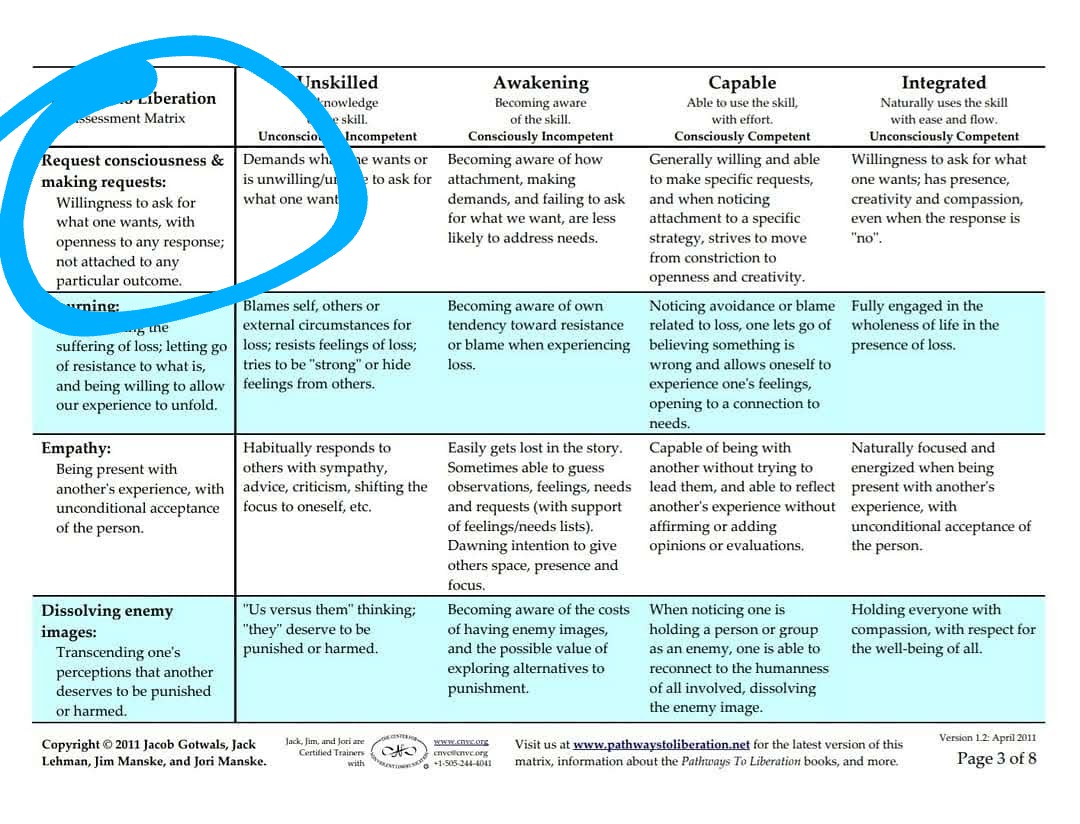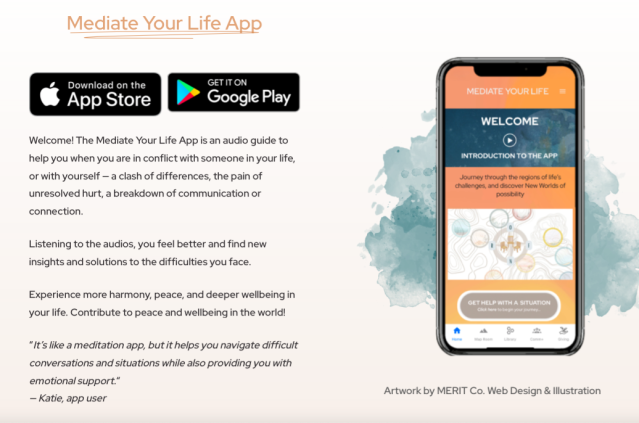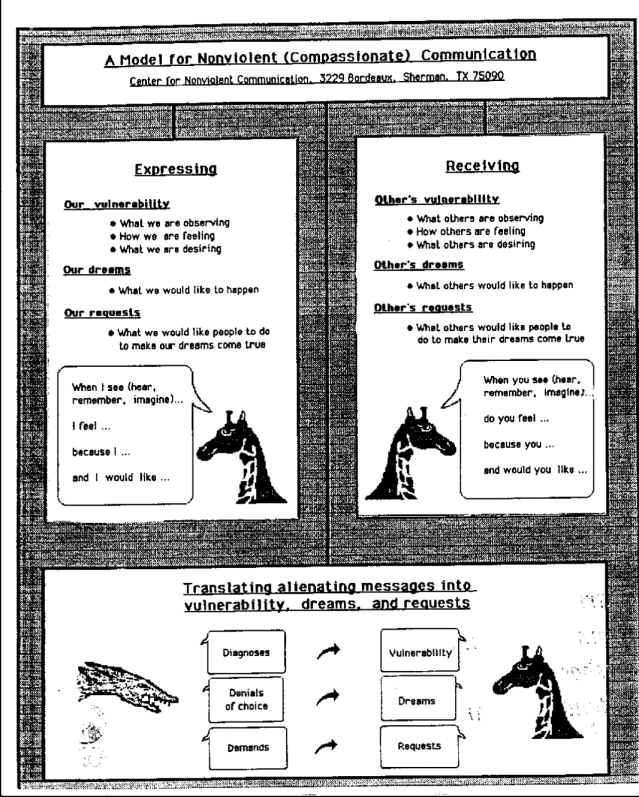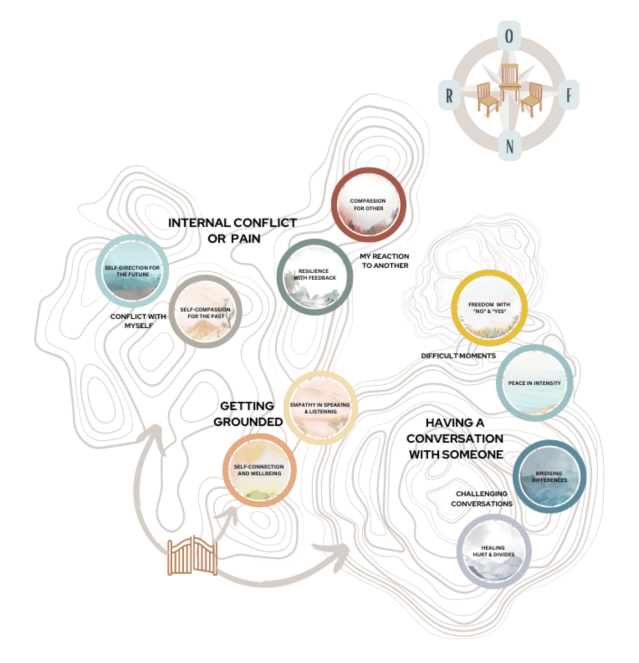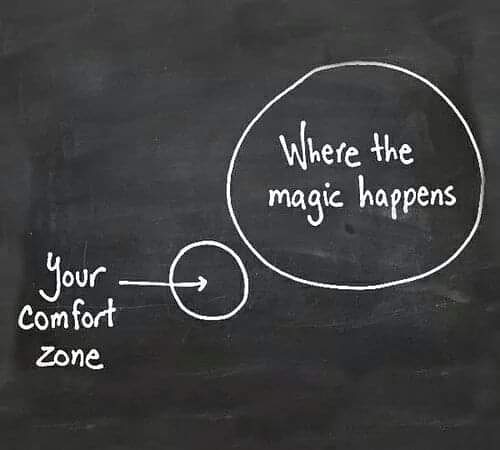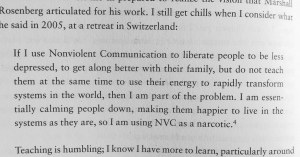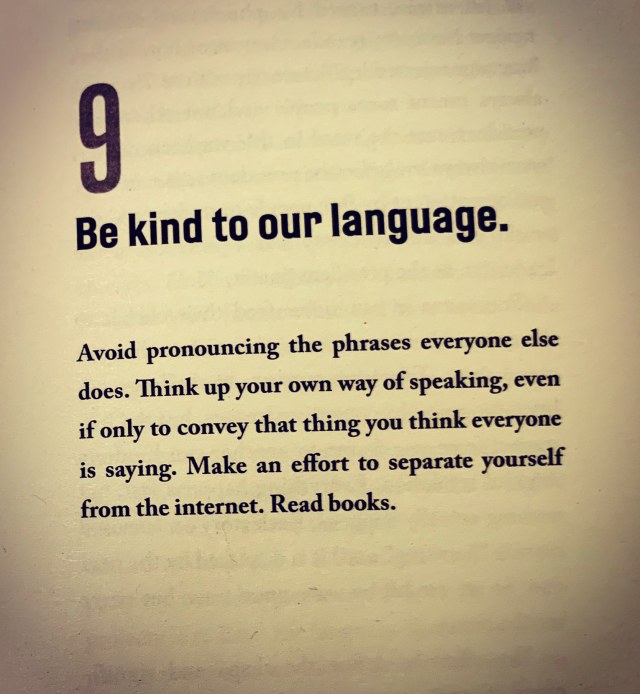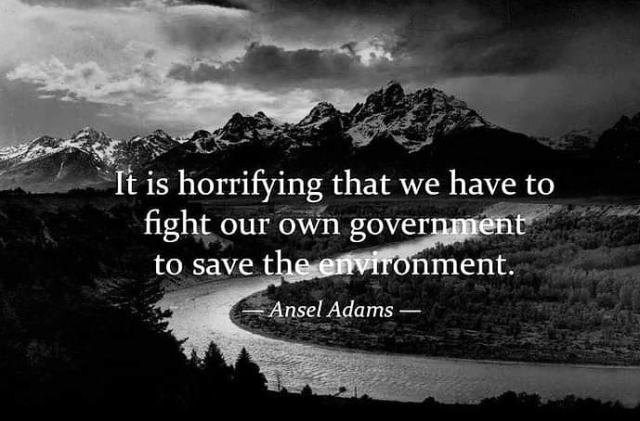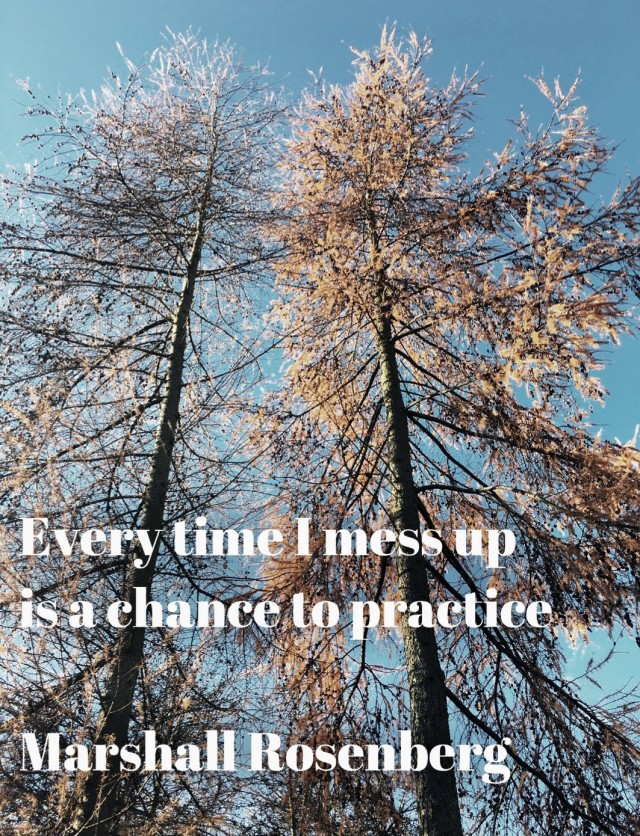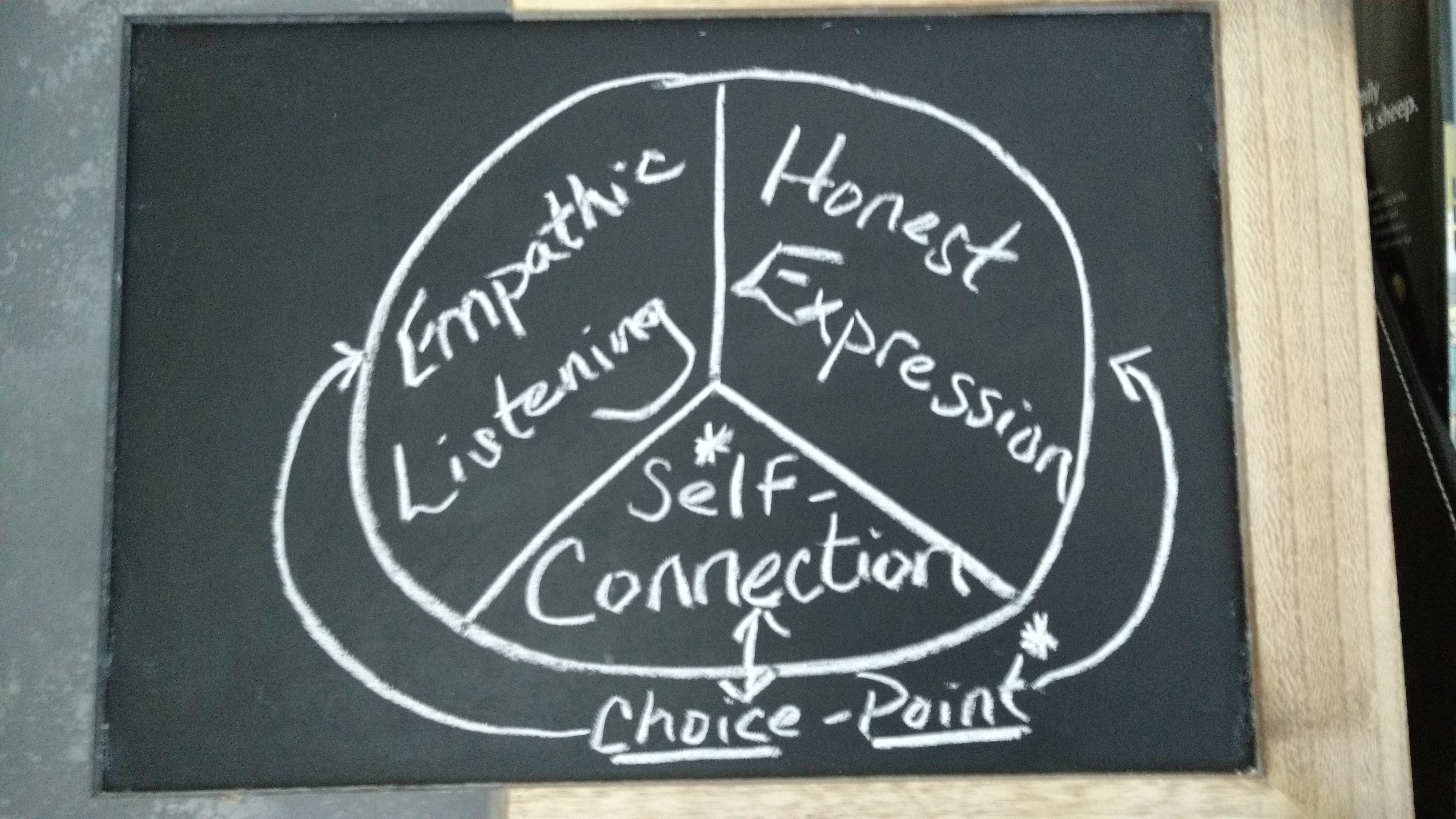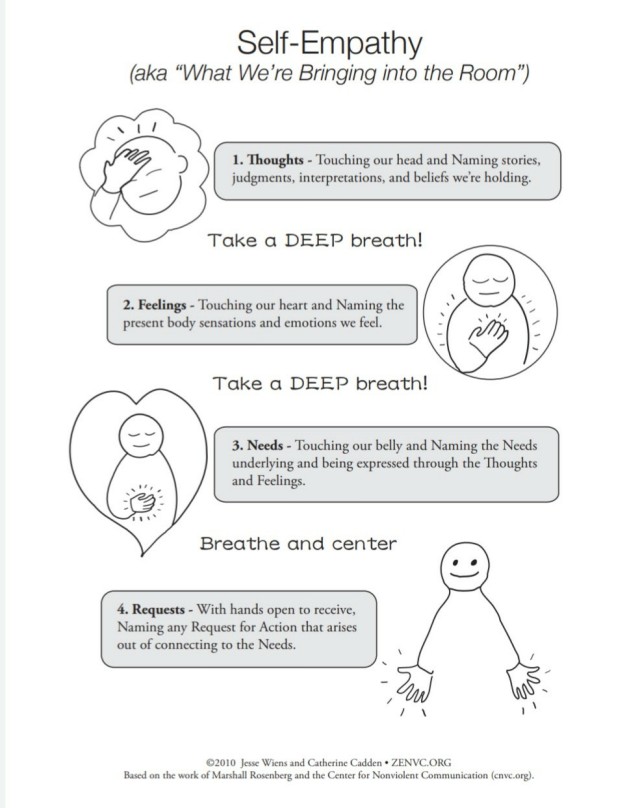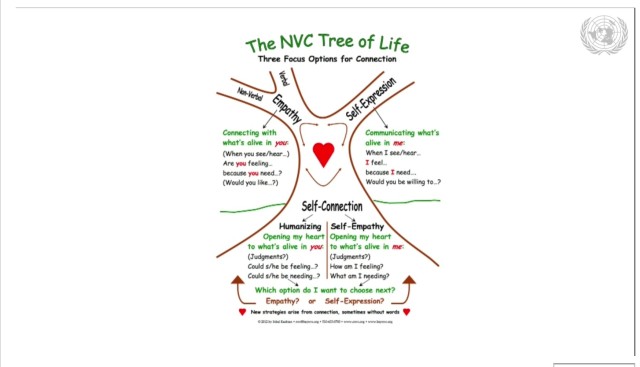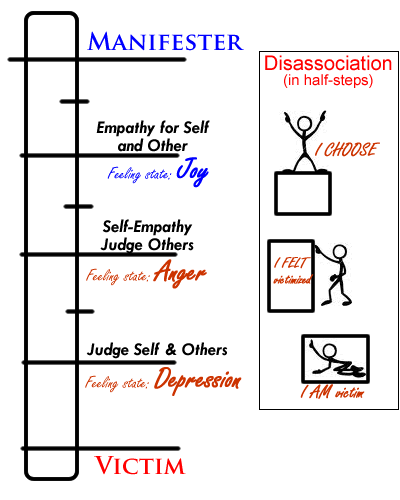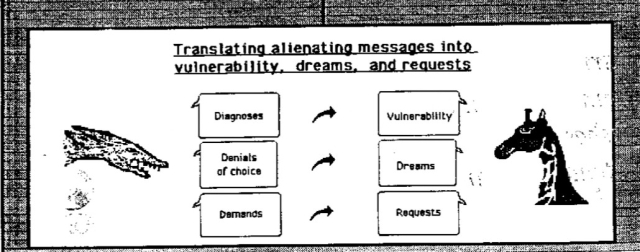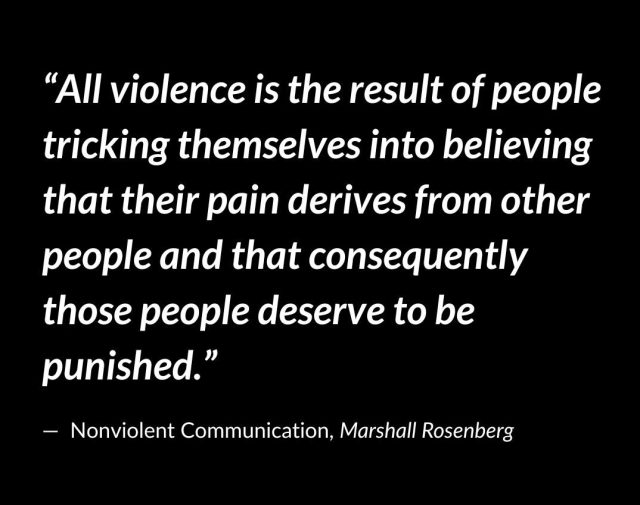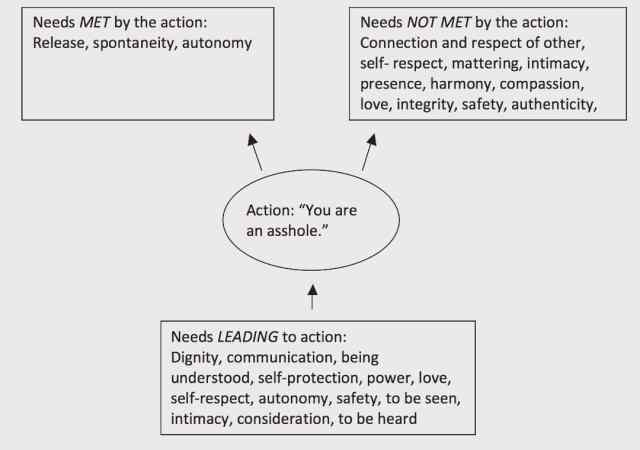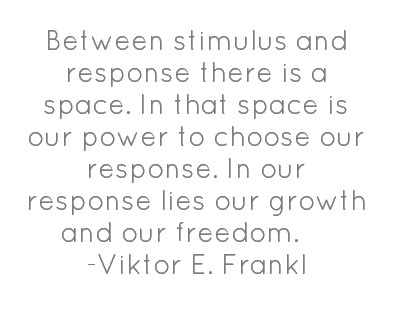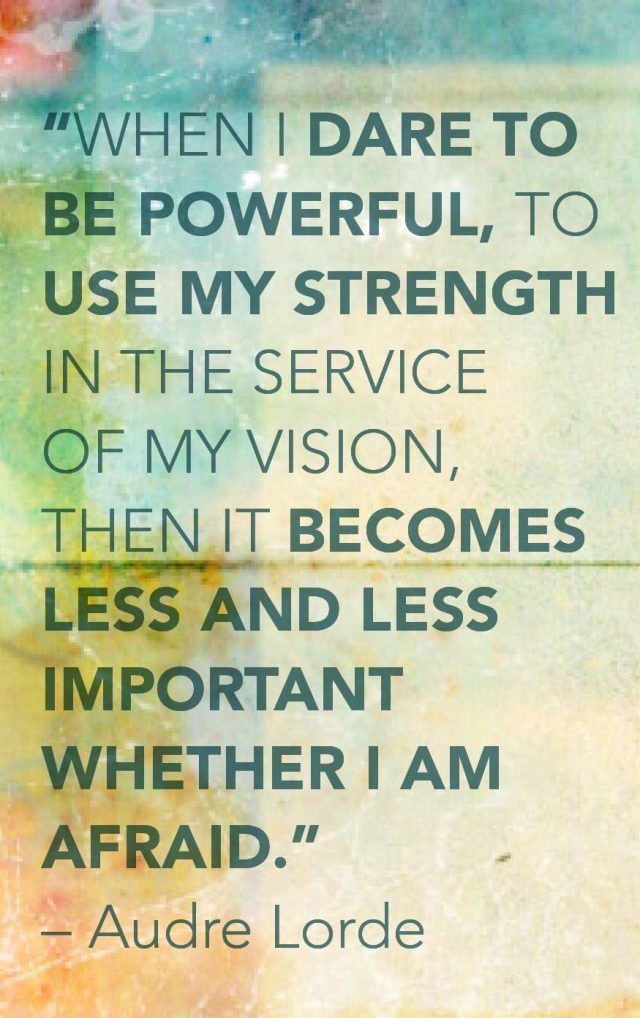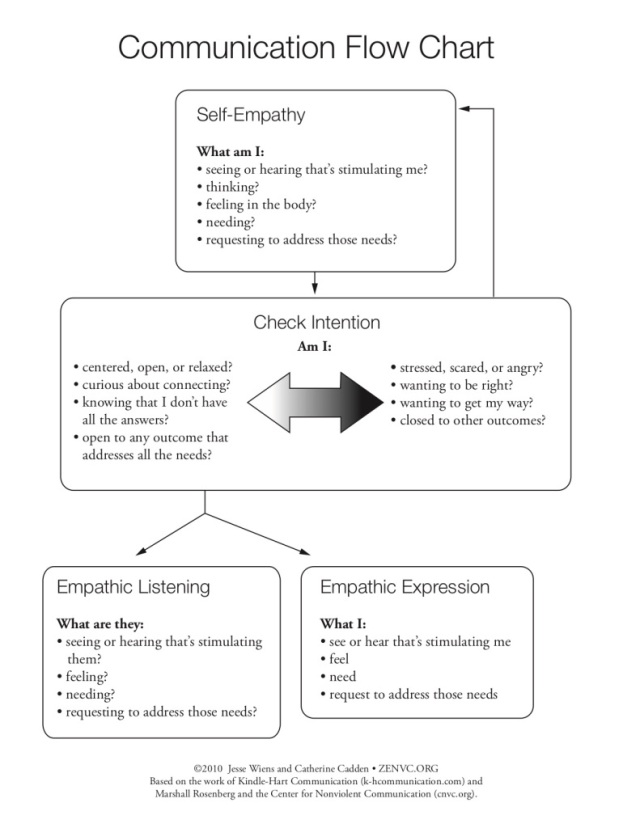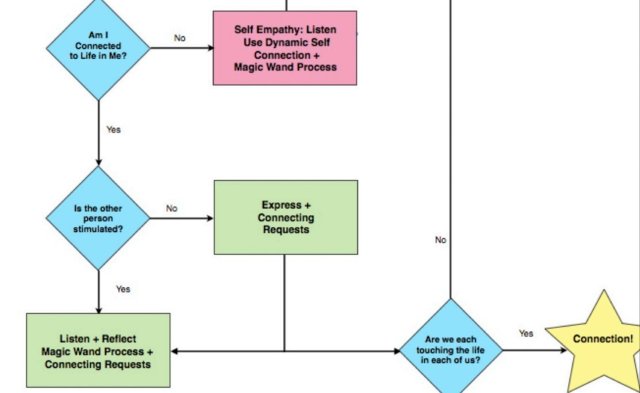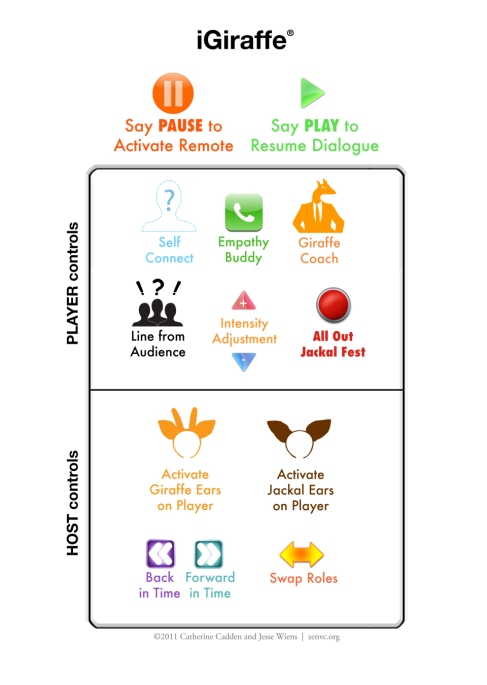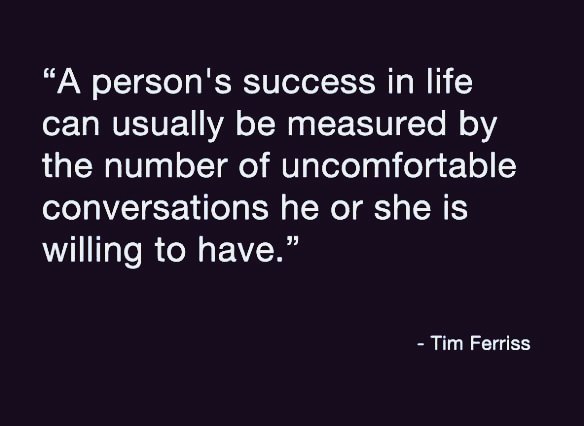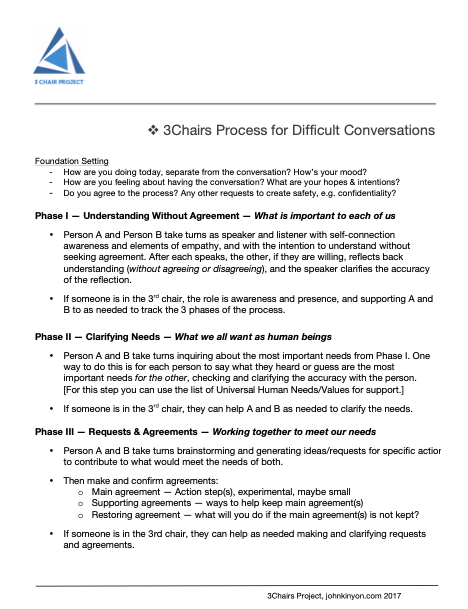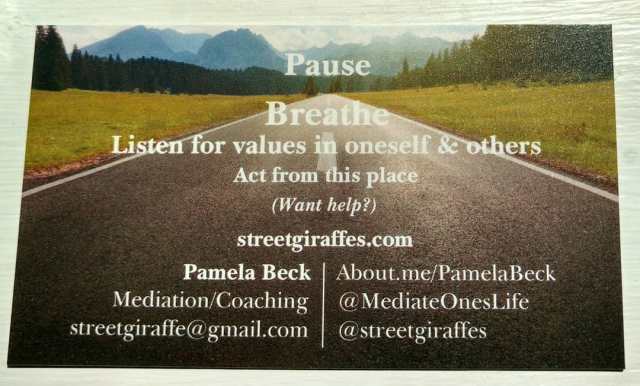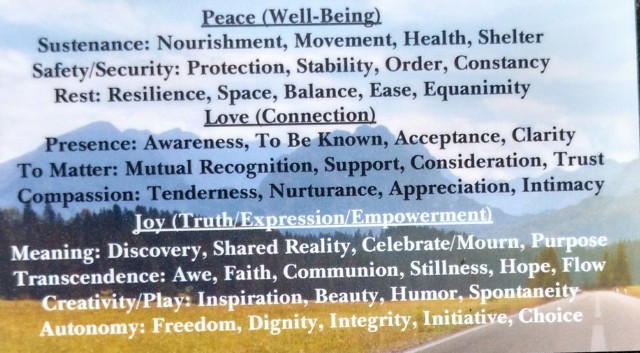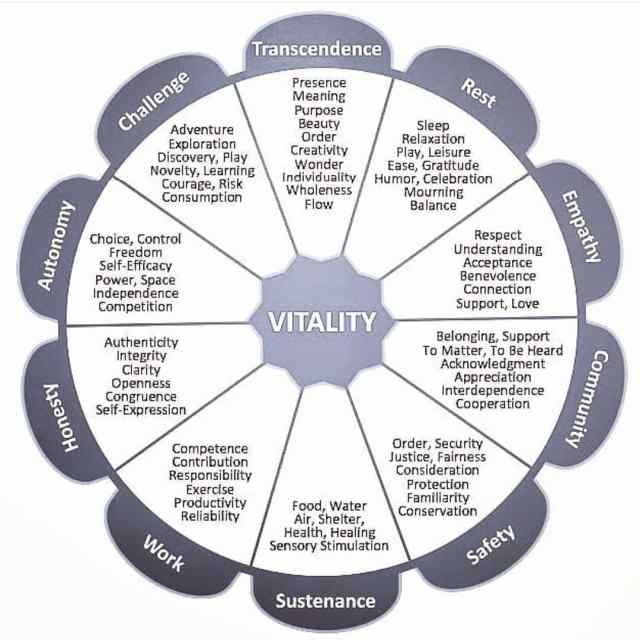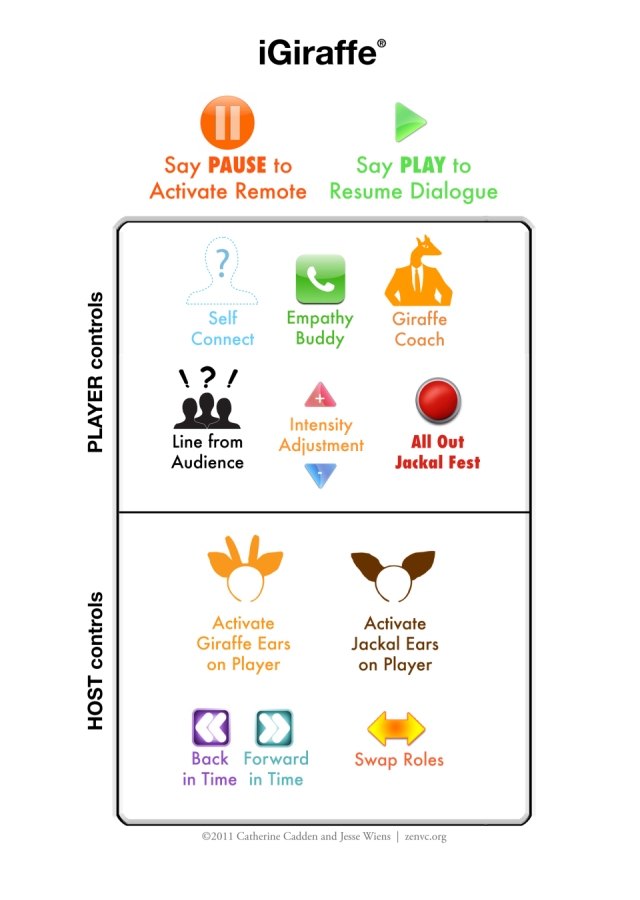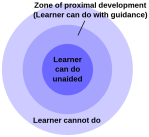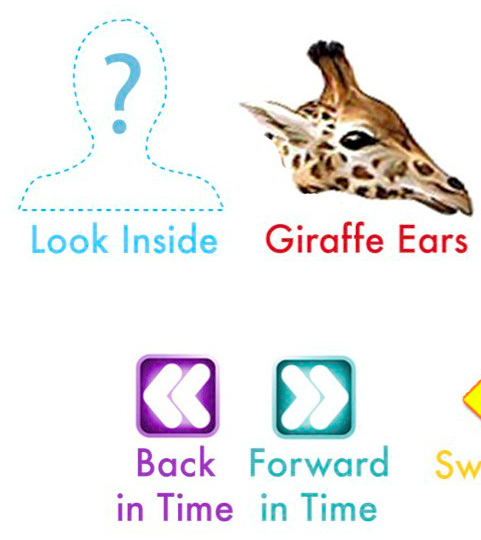 Feeding the giraffe at Longleat by Ian Kirk (Wikimedia Commons)
Feeding the giraffe at Longleat by Ian Kirk (Wikimedia Commons)
“To interrupt them when you have heard more words than you want to hear, and when the words are not really connecting you clearly to what is alive in the person. Say, “Excuse me” and then what we say is to bring the conversation back to life, back to what is alive in this person at this moment, behind all the words.”

Yvette Erasmus, PsyD – YouTube
More as to NVC Basics (Observations, Feelings, Needs & Requests, a.k.a. OFNR): NVC Academy resources re: OFNR
In addition to OFNR, for fuller context please see PLATO & Wanting Fully Without Attachment
Yvette Erasmus, PsyD
Phrasing Connection-Requests
Beneath courtesy of Miki Kashtan of thefearlessheart.org
(Beginning at 27:15 minute mark):
Miki Kashtan: NVC Marketplace — Naturalizing the Language of NVC
Connection-Requests
(Courtesy of Miki Kashtan)
Connection requests focus on the quality of connection between people instead of on any particular strategy or solution. While the core motivation for a connection request may be connection with the other person, varied internal states and needs may help guide us toward different types of connection requests.
Self-connection and understanding of our motivation in making a connection request can therefore greatly support our capacity for discovering and articulating what specifically we want from the other person that we believe may contribute to connection.
When your focus is on the quality of connection, after you express feelings and needs, pause to consider the needs that arise within you in the moment. As much as you are able, focus on the needs in relation to the moment of this interaction rather than the content of what you expressed to the person. We call this a shift from content to quality of connection. Use the options below to check what is true for you, and share your authenticity as vulnerably as you can. If what you share is indeed different from the original content, reveal the needs behind the request you make.
Below are five specific types of connection requests. They are not intended to be exhaustive, but rather to offer a range of possibilities among which you may find your own truth:
Request Type 1: Asking for reflection of what we said – for confidence that we were understood for our intentions
Asking for reflection is often challenging for us and for the other person, principally when people interpret such requests to mean that we think they don’t understand us. This can trigger self-judgments or judgments of us (“You think I’m stupid?!”).
As always when making a request, revealing the need behind the request can nurture connection and clarity. In this case this would mean prefacing the request for reflection by sharing what leads us to ask for reflection. For example, after expressing what you want to be heard about, and before making the request, you might say:
- Sometimes I’m not as clear as I want to be…
- I’m worried I’m not making sense…
- I talked more than I intended, and I want to make sure the essence of what I was saying was clear…
- I’m a little anxious about what I said, and it would help me to hear…
The request itself can take any number of forms, such as:
- Would you tell me what you just heard me say?
- Would you tell me what you hear is important to me (or what is the essence of what I shared)?
Request Type 2: Asking for empathic connection with us – for empathic support, care, mattering, revealing our humanity
We may feel vulnerable asking for empathic connection with us in the midst of a dialogue, and if so, consider sharing that vulnerability first (see above for examples of a similar focus on sharing the vulnerability about asking before making the request). It may also be challenging for the other person when they don’t know what exactly we want from them. If you are asking a person with NVC experience for empathic connection, you can simply name a request for empathy. But if the person does not have experience, consider what would give you a sense that the person is empathically present with you, and whether this is even doable for that person. For example:
- I’d love to know whether you get the feelings and needs I’m trying to express. Would you tell me what you’re getting?
- I’m wondering whether you have a sense of what’s in my heart? [If yes…]
- It’s helpful to me to hear how others sense my heart – can you tell me what you sense?
- Do you have a sense of your heart being open to me and present with me?
Request Type 3: Asking to hear about the impact of our words – out of care and/or for clarity on how to proceed
Two primary motivations can lead us to want to hear about the impact of our words:
A) We want to shift focus and connect with the other person
In this case, our connection requests are straightforward, though it’s still helpful to reveal what leads us to ask the question. For example:
- I’d love a sense of how you feel about what I’m saying.
- It matters to me to connect with what’s up for you.
Followed by a request, such as:
- Would you tell me how you’re feeling about what I just said?
- What’s this bringing up in you?
- How is it for you to hear this?
- How are you doing right now?
- I just noticed [your breathing]. Can you tell me what’s going on in you?
- I’m really curious to know what’s happening in you. Are you willing to share that?
B) We want to know how we are received, but our focus is still on ourselves. We may feel vulnerable, nervous, etc., and hearing from the other person can help us get clarity and choose how to continue the conversation.
If this is the case, instead of just asking about what’s going on in the other person, we could, again, reveal the feelings and needs behind our request. Unacknowledged fear may easily be interpreted as aggression or disconnection by the other person, so by revealing our own vulnerability we make it more likely that we will be accurately understood. Additionally, when we ask the other person about what is going on for them, we invite them to be vulnerable. By sharing our own vulnerability first we increase the likelihood that the other person will experience willingness to share their vulnerability.
For example, we might say one of the following:
- I feel pretty vulnerable about what I shared and want to have a sense of how I’m heard. Would you tell me…
- I am a little nervous about what I just shared, and I want to have clarity and honesty between us. Would you tell me… I want to make sure that hearing me is not at cost to you. Would you tell me…
- I’m worried I’ve been talking longer than you enjoy listening. Would you tell me… Then follow with one of the requests listed above.
Sometimes, instead of using open-ended questions like the ones above, we may be hoping for or concerned about a particular effect of our expression. In those cases, it may be helpful to make this hope or concern explicit. For example:
- I want to check whether you are hearing any blame or judgment because it’s not my intention. Would you tell me whether that’s coming up for you?
- I am feeling quite vulnerable, and hoping that my expression is supporting a sense of connection between us. Would you tell me if you are feeling any closer to me hearing what I shared?
Request Type 4: Supporting connection towards solution – to establish partnership in moving to strategies for solution
Sometimes, when we have some confidence in the quality of connection and we want to try to move towards a solution, we may want to begin the shift toward solutions by establishing an intention of caring for both people’s needs together.
For example:
- I want this to work for both of us. Would you tell me what are your concerns about the strategy I am proposing?
- Would you tell me what might not work for you about what I am requesting?
- Would you brainstorm with me to come up with solutions that would work for both of us?
- Would you tell me if you are open to exploring other options to work this out?
- Would you tell me if you imagine any other strategies that would meet both of our needs?
Request Type 5: Checking about openness to dialogue or to listening
At times, we are not even confident that the other person is ready to hear us or to have a conversation. Instead of starting directly with the content we want to bring up, we can begin with expression about our desire for dialogue and inquire about the person’s availability for that. For example:
- Would you be willing to listen to me talk about my experience?
- Are you open to having this conversation now?
As with other elements of NVC, making connection requests invites us to offer our presence, authenticity and compassion to others. Our own honesty, vulnerability and self-understanding will more likely contribute to the quality of connection we want than any particular form or wording. Yet by recognizing the variety of needs that lead us to want to connect, and the variety of requests we may make to support those needs, we can more easily attend to our own and to others’ needs for clarity, trust, and connection.
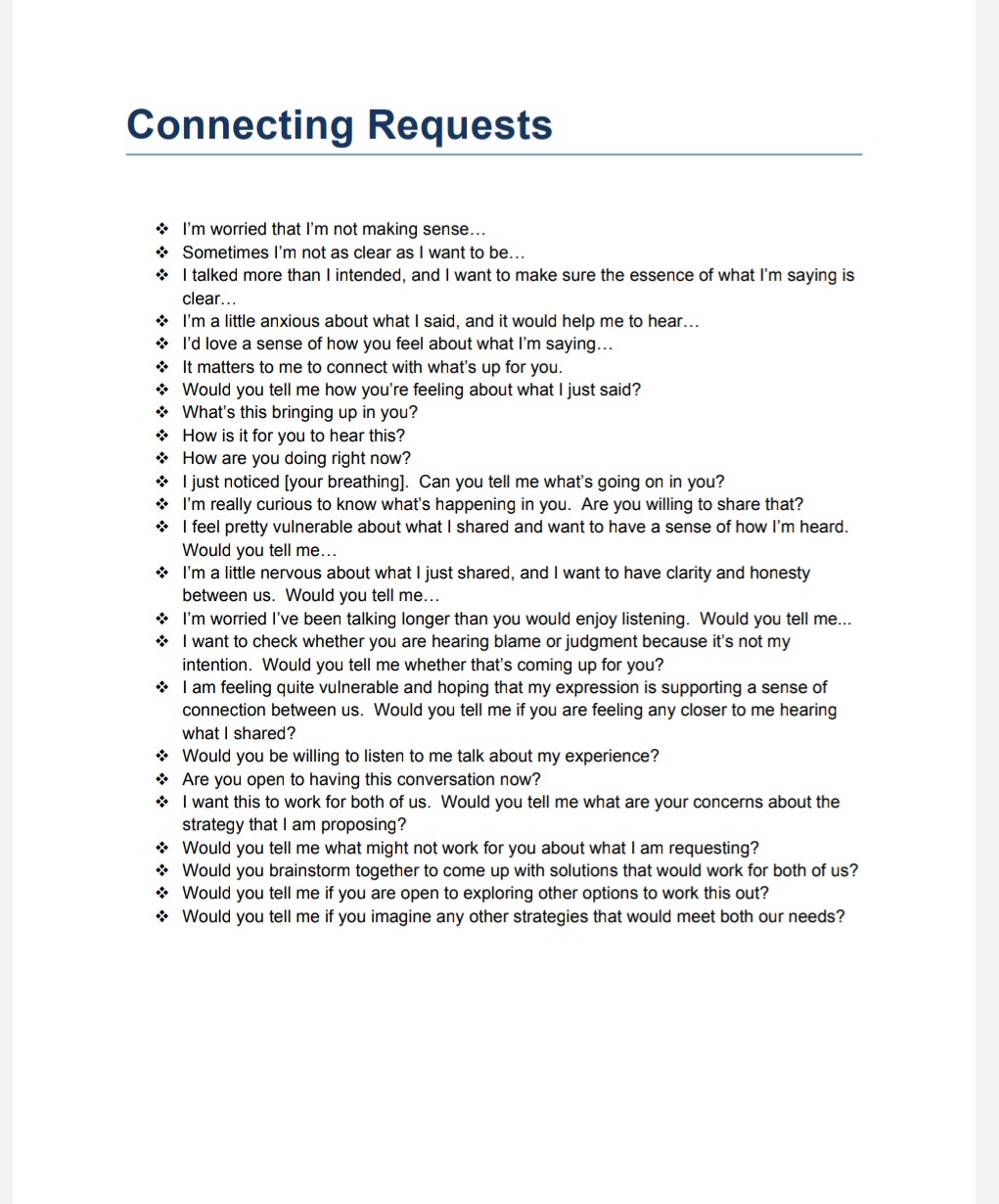
Courtesy of Miki Kashtan of thefearlessheart.org
Naturalizing the Language of NVC
See also: Phrasing Needs & Natualizing

Pathways to Liberation – Self-Assessment Matrix
FYI ~ Connection Requests for Groups
Interrupting towards Connection (Skill #6 – 5:40 min/sec mark)
See also: NVC Mediation




